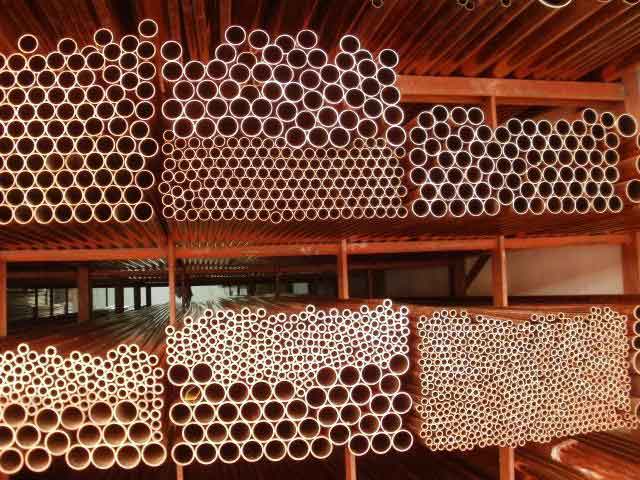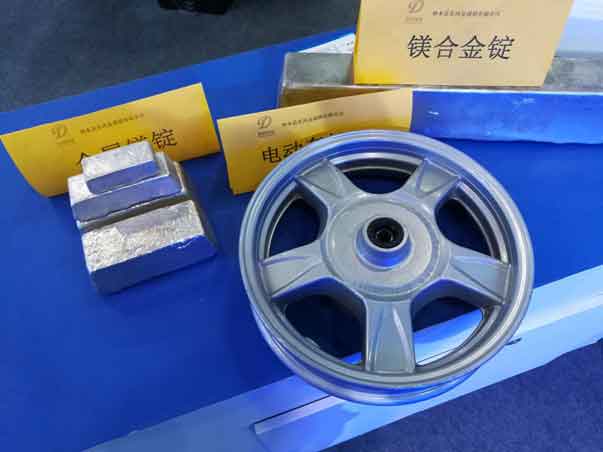The development of domestic high-temperature titanium alloys lags behind that of developed countries, such as the United States, the United Kingdom, and Russia. In the early stage, it was mainly based on imitating mature foreign brands.
After a lot of exploration and exploration by scientific researchers for a long time, a high-temperature titanium alloy system featuring the addition of rare earth elements has gradually formed. Among them, the most typical are the high temperature titanium alloys Ti60, Ti600 and TG6 for aero-engines at 600℃. High temperature titanium alloys Ti65 and Ti750 are used for short periods above 600℃.
In order to ensure the higher thermal strength of high-temperature titanium alloys, Ti60 has a higher degree of alloying, and a higher content of Al, Sn, Si and other elements are added. The composition is Ti–5.6Al–4.8Sn–2.0Zr–1.0Mo–1.0 Nd–0.35Si. The introduction of the trace rare earth element Nd not only significantly refines the original structure of the Ti60 alloy, but also improves the oxidation resistance. On the one hand, the addition of rare earth elements can internally oxidize to form rare earth oxides, purify the matrix, and improve thermal stability; on the other hand, the thermal expansion coefficient of the dispersed and precipitated rare earth oxide particles is different from that of the matrix, and dislocation rings are easily formed around it when cooled. Can further strengthen the matrix. At present, Ti60 has entered the trial production stage of small-scale semi-finished products.
The typical feature of Ti600 is that 0.1% rare earth element Y is added, and the composition is Ti–6.0Al–2.8Sn–4.0Zr–0.4Mo–0.45Si–0.1Y. Compared with foreign high-temperature titanium alloys at 600℃, Ti600 has obvious advantages in creep performance under the premise of ensuring the same room temperature and high temperature mechanical properties. Under the same stress loading conditions, the residual deformation is lower and the welding performance is good. At present, it has completed the pilot test and entered the industrialization stage. The products mainly include plates, bars, small-size valves, forgings, etc.
The typical feature of TG6 is to replace Mo with the weak β-stabilizing element Ta, increase the Si content, and add 0.06% C to expand the processing window of the two-phase zone. The composition is Ti–5.8Al–4.0Sn–4.0Zr–0.4Si–0.7Nb–1.5Ta -0.06C. The high Si content significantly improves the alloy’s creep resistance. A certain amount of element Ta, as a β-stabilizing element, can effectively improve its processing performance while increasing the strength. At present, the alloy has been used in the manufacture of compressor parts for aircraft engines below 600°C. For short-term applications, the high temperature titanium alloy Ti65 above 600℃ has a composition of Ti–5.9Al–4Sn–3.5Zr–0.3Mo–0.3Nb–2.0Ta–0.4Si–1.0W–0.05C. The long-term use temperature is 650℃, and the short-term use temperature can reach 750℃. Compared with 600℃ high temperature titanium alloy, the addition of weak β-stabilizing element Ta and high melting point element W not only effectively compensates for the loss of alloy strength caused by the decrease of neutral elements Sn and Zr, but also improves creep resistance and durability The introduction of trace element C also effectively improves the relative temperature sensitivity of the initial α during the heat treatment of the upper part of the two-phase zone, expands the processing window of the two-phase zone, and achieves the best match of strength, toughness, creep and fatigue properties. At present, the alloy is still in the research and development stage.
Ti750 is currently the highest temperature high-temperature titanium alloy used in China. Its composition is Ti-6Al-4Sn-9Zr-1.21Nb-1.6W-0.3Si, and its short-term use temperature can reach 750°C. The typical feature is the use of element W to improve high temperature performance, and element Si to improve alloy creep resistance. However, the content of Al in Ti750 is relatively high. After long-term aging or thermal exposure, a certain ordered phase Ti3X (X is Al, Sn, etc.) will be precipitated. ), resulting in a serious decrease in the ductility and toughness of the alloy at room temperature.
In summary, it is difficult for the long-term use temperature of high-temperature titanium alloys in the world to exceed 600°C. The main reason is that the use temperature is higher than 600°C. On the one hand, it is difficult to match and coordinate the thermal strength and thermal stability of the alloy; The oxidizing property drops sharply, resulting in a decrease in thermal stability and fatigue performance. Corresponding to the parts used in the compressor part of aero engines, there is also a risk of titanium fire. The possible solutions are:
- Seek new additional elements.
- Rely on the role of rare earth elements: internal oxidation forms the rare earth oxide to purify the matrix, the use of the difference between the rare earth oxidation and the thermal expansion coefficient of the matrix to form dislocation rings during the cooling process to strengthen the matrix, refine the as-cast grains, and improve thermal stability. Therefore, it is necessary to fully explore the role of rare earth elements.
- Reasonably regulate and control thermal processing technology and heat treatment system. Through the precise control of the thermal processing process, including the control of the thermal processing temperature, strain rate, deformation amount and subsequent cooling rate, the precise prediction of the structure can be achieved. Corresponding performance of the structure and precise organization control are crucial to seeking the best overall performance matching mode of the alloy. For some alloys with performance requirements in a specified direction, the deformation process can also be controlled to form a preferred orientation along that direction, thereby improving its performance in a certain direction.
- A large number of researches on alloy anti-oxidation coatings have been carried out.


